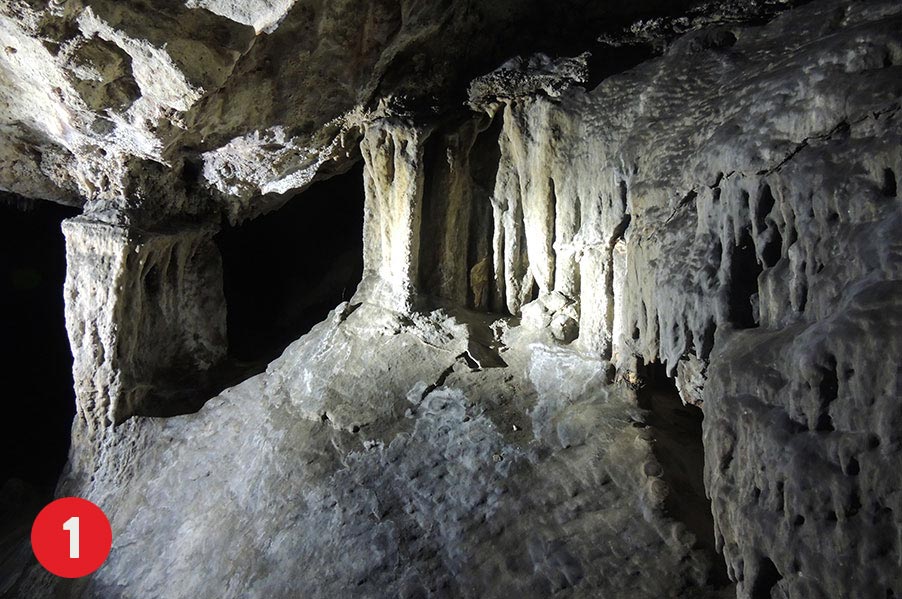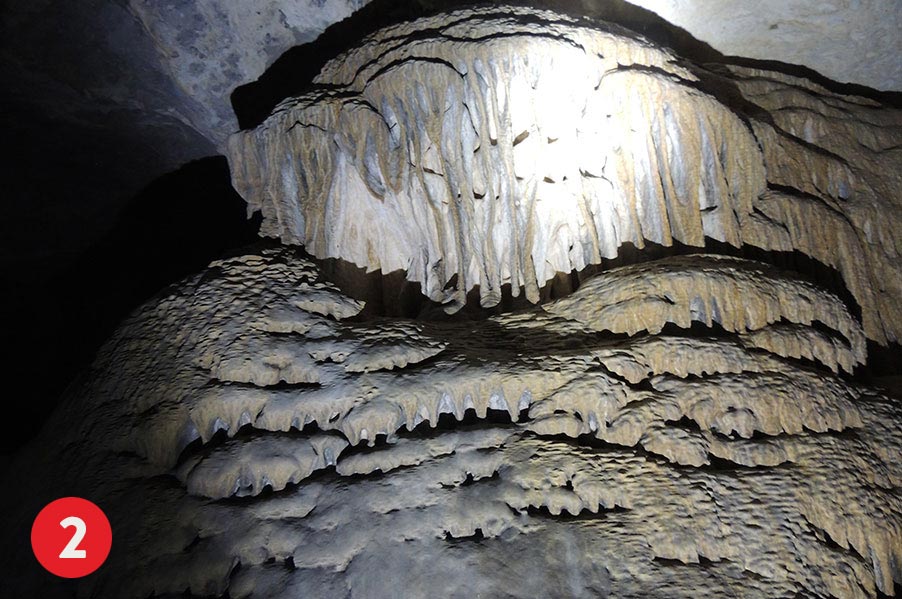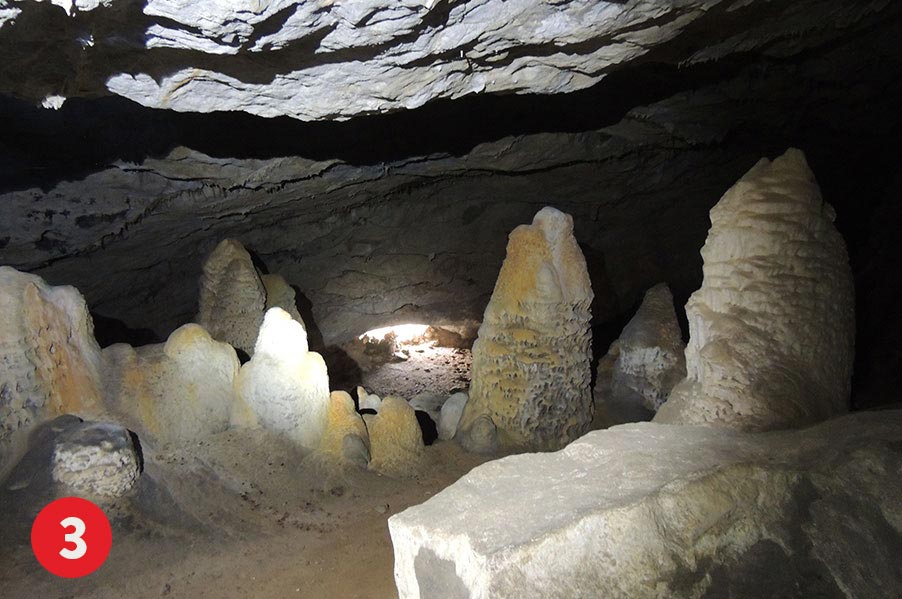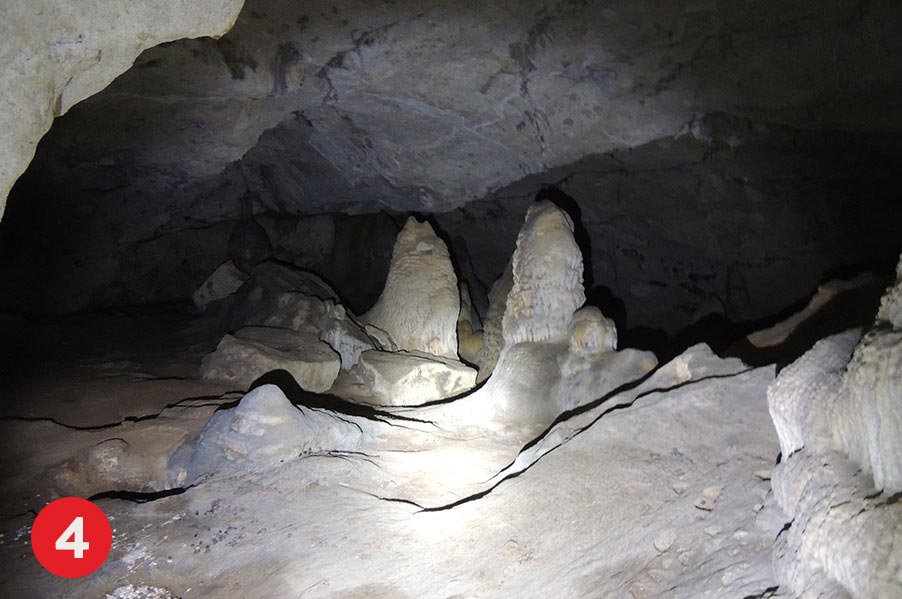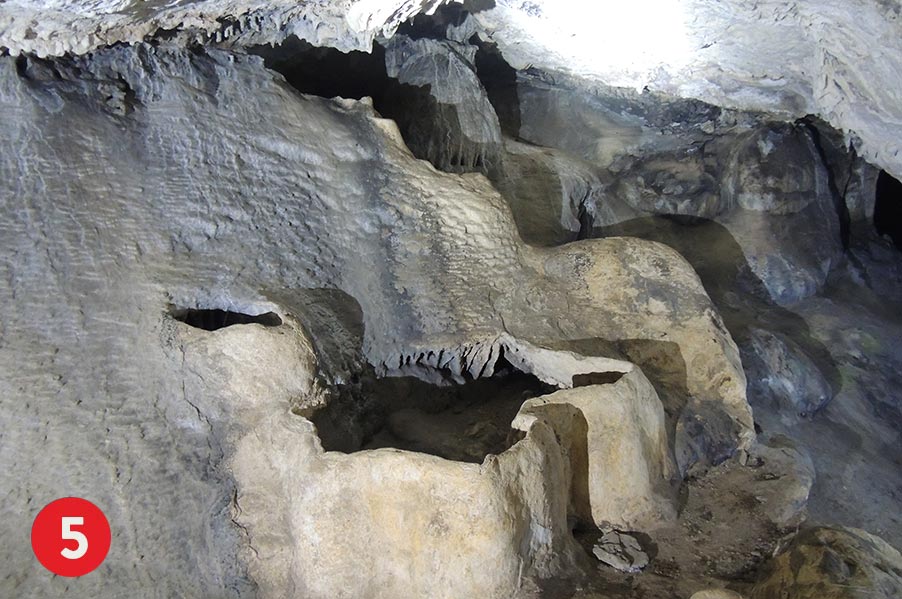- Home
- Karpathos
- Karpathos Entries
- Limiona's Cave
Description
Caves are naturally formed through a number of geologic processes including chemical weathering and water erosion. Most caves form by dissolution of limestone. In this case, limestone rocks are dissolved by rain and ground water that contains organic acids. In these caves, precipitation of calcium carbonate (the main mineral in limestone rocks) leads to the formation of stalactites and stalagmites. These mineral deposits are the icicle-shaped formations you see handing from cave ceilings and growing from the floors. Mineral deposits such as these are referred to as speleothems. Many of these caves are partially located below the water table (the level below which the ground is saturated with water), leading to naturally occurring lakes/flooding within the interior of the cave.
Picture 1: Stalactites dripping from the ceiling meet with other dripstone forming on the cave floor.
Picture 2: Small stalactites form where water naturally falls.These structures are formed through the dissolution of calcite and thus the deposition of calcium carbonate upon contact with air.
Picture 3,4 and 5: Large stalagmites on the cave ground. Such structures are formed in the same manner as stalactites, except calcium carbonate is precipitated out of the water solution after it reaches the cave floor.
Picture 6: The creation process of stalactites
Special Thanks to our Geologist contributor Miss Gina DiBenedetto
